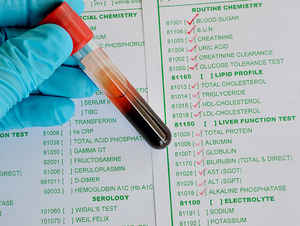How do I know if I have parathyroid disease?


We diagnose parathyroid disease using lab tests, particularly calcium and parathyroid hormone (PTH) levels. (If you know your calcium and PTH, you can use the Parathyroid Analysis Tool for an assessment of what your labs mean.)
A high serum calcium level (checked on routine labs like a Basic Metabolic Panel or Comprehensive Metabolic Panel) is the hallmark of primary hyperparathyroidism. What is considered normal for calcium varies with age. Adults over about age 40 should have calcium levels that are at or below 10.0 mg/dl (2.5 mmol/l). Younger adults can have slightly higher calcium levels, and teenagers can have calcium levels in the mid to high 10s (2.7 mmol/l).
The most common cause of high calcium is primary hyperparathyroidism, so most people who are told they have high calcium will have parathyroid disease. The way we confirm this is by checking a calcium and PTH level together. A high calcium, combined with a high or normal PTH level, is diagnostic for primary hyperparathyroidism. Note that the PTH level can be normal! This is confusing to a lot of patients. But the key is that PTH levels can only truly be evaluated in relation to the calcium level. When the calcium level is normal, I expect the PTH to also be normal. If the calcium is high, I expect that normal parathyroid glands will be suppressed - they will “turn off” and stop making as much PTH. If the parathyroids do not turn off, but keep making hormone, I know that there is something wrong with them, likely a benign tumor.
I also like to check a Vitamin D level. Vitamin D 25-OH levels are typically low in parathyroid disease. A low Vitamin D level with a high calcium level very strongly suggests parathyroid disease, but needs to be confirmed with a PTH level.
We do not use imaging studies to diagnose parathyroid disease. Although primary hyperparathyroidism is usually caused by a tumor, these are often so small that they are not seen on imaging. We know that they are there because of lab results.
If your calcium level is always on the low end and you have a high PTH, then you may have secondary hyperparathyroidism. This occurs when the parathyroid glands have to work hard to try to get the calcium level into normal range. This can happen if your intestines cannot absorb calcium well, for example. This is a different condition from primary hyperparathyroidism, and the treatment is different. While primary hyperparathyroidism is only cured with an operation, secondary hyperparathyroidism is initially treated medically.
For help with interpreting your calcium and PTH levels, check out the Parathyroid Disease Analysis App.



